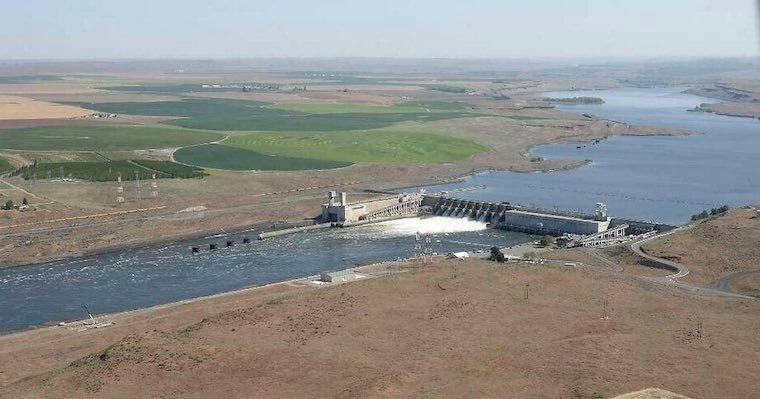forum
library
tutorial
contact

Feds Agree Removing Dams
Would Be a Mistake
by Editorial Board
Capital Press, March 5, 2020
|
the film forum library tutorial contact |

|
Feds Agree Removing Dams
by Editorial Board
|
Without the dams, the river would be too shallow to barge wheat and other farm goods
the roughly 100 miles between Lewiston, Idaho, and the Tri-Cities.
 We've said it would be a bad idea to breech the dams on the Lower Snake River. A report commissioned by the U.S. Army Corps of Engineers, Bonneville Power Administration and Bureau of Reclamation and released last week agrees.
We've said it would be a bad idea to breech the dams on the Lower Snake River. A report commissioned by the U.S. Army Corps of Engineers, Bonneville Power Administration and Bureau of Reclamation and released last week agrees.
The dams in southeast Washington generate electricity and allow farmers to move grain by barge down the Columbia River's main tributary.
Without the dams, the river would be too shallow to barge wheat and other farm goods the roughly 100 miles between Lewiston, Idaho, and the Tri-Cities. Lake Sacajawea, a reservoir created by Ice Harbor Dam, irrigates 47,000 acres. The loss of electricity generated by the dams would increase the cost of pumping groundwater.
The report confirms all of that, and adds that it would increase greenhouse gases and make the region more vulnerable to power blackouts.
Breaching the dams would have the most benefits for endangered salmon, according to the study, and several Indian tribes said it was the best option for offsetting the river system's harm to treaty rights.
But breaching would not allow federal operators to meet the congressional mandate to maintain the dams for navigation, hydropower and irrigation, according to the report. "It also has the highest adverse impacts to other resources, especially social and economic effects," the report states.
Breaching the dams would have major long-term benefits to fish in the Snake River because of improved rearing and migration conditions, according to the report. Estimating the number of fish that would survive and return to spawn is difficult because of the uncertainty of ocean survival, it states.
Drawing down the water behind the dams could expose 14,000 acres that are currently underwater. The long-term goal would be to return the river to its natural state, benefiting tribal fishing, gathering and occupation, according to the report.
The power could be replaced by more natural gas-generated electricity, but that would increase the emissions of power-related greenhouse gases by 10% in the Northwest and would cost about $1 billion a year, or one-third of BPA's revenues, the report states
"If Bonneville had to replace the lower Snake River projects' full capability with zero-carbon resources, the rate pressure could be up to 50 percent on wholesale power rates," the report states.
Breaching the dams also would increase transportation-related greenhouse gases, as trucks and trains replace barges, according to the report. Greenhouse gases from transporting wheat would increase by 53%, according to the report.
The report's "preferred alternative" on operating the system includes modifying some fish-passage structures. Also, spilling more water over dams would benefit endangered runs of salmon and steelhead in the Lower Columbia and Snake rivers.
The Center for Biological Diversity issued a statement accusing the report of giving "short shrift to the only viable alternative for saving salmon and ultimately orcas -- removing the four lower Snake River dams."
We think supporters of breaching the dams are giving short shrift to the livelihoods of farmers, barge operators, deck hands, dock workers and the vendors who support them.
learn more on topics covered in the film
see the video
read the script
learn the songs
discussion forum
